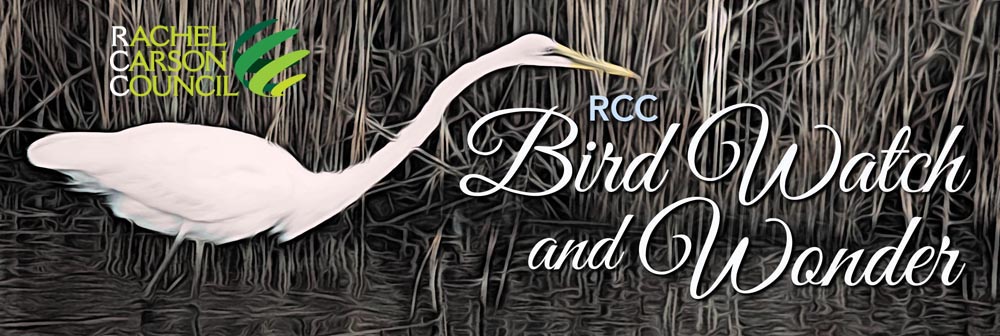 | | | 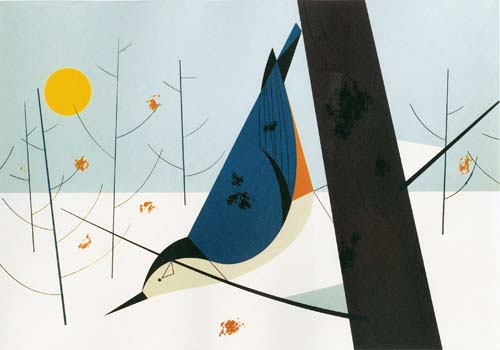 In October and early November, climate change and climate policy flooded the news. Bird’s fall migrations slowed, but the headlines picked up as more news was released about our changing climate and birds. From stories about birds and wind energy to film and book recommendations, this issue of RCC’s Bird Watch and Wonder will update you about our feathery friends. In October and early November, climate change and climate policy flooded the news. Bird’s fall migrations slowed, but the headlines picked up as more news was released about our changing climate and birds. From stories about birds and wind energy to film and book recommendations, this issue of RCC’s Bird Watch and Wonder will update you about our feathery friends.
In late October, we witnessed the first Birdability Week, a week dedicated to making birding accessible to everyone. Bird enthusiasts celebrated inclusive birding and the work of birders with disabilities through social media blasts, webinars, and, of course, birding! If you missed Birdability Week 2021, you can still catch up by watching the recordings included under the link above. Only a week after Birdability Week 2021 came to a close, the world was launched into climate negotiations at COP26, starting on October 31st. COP26 stands for the 26th Conference of the Parties and is a forum where countries from around the world convene to discuss climate change, both the problems facing us and possible solutions. While COP26 does not include explicit discussions of bird conservation, any forum that addresses climate change is also relevant to the survival of bird communities and ecosystems. For updates on COP26 and climate policy, check out the UN Climate Change Conference website. For more bird news, books, films, and events, continue reading the November issue of Bird Watch and Wonder. | | | | | | | | 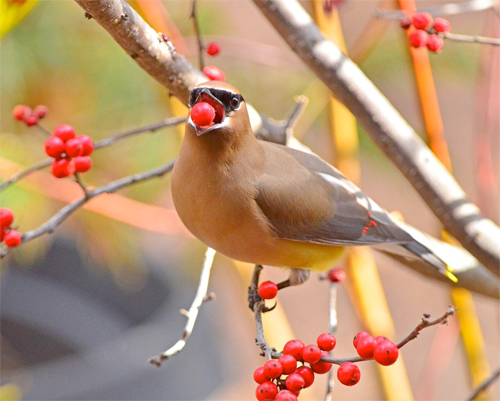 Thankful For Birds Webinar Thankful For Birds Webinar
In this month of thanksgiving, join us on November 12th at 6 PM central time as we explore the many ways that birds enrich our lives and sustain us. Learn about feeding tips, bird safety and native plants that can be used to say thank you back to the birds at this online event. Register here! | | | | | | | | | | | | | | What Seattle-area Birders Can Listen For in Fall: Fewer Songs, More Warnings Though we may be hearing the sounds of some of the same birds we’ve been listening to much of the year in the Seattle area, the calls and cries they’re making now are often of a different type. Gone are the more complicated, lyrical trills that we typically think of as “songs.” Those are used to attract mates or defend nests and are no longer needed as we head into our rainy Pacific Northwest winter, according to Whitney Neufeld-Kaiser, a Western Washington birder who teaches classes on how to identify birds by song. | | | | | | Snowy Plovers, Already Threatened Birds Are Caught Up in Orange County Oil Spill Life was never easy for the Pacific Coast’s western snowy plover. The small, gray-feathered, white-bellied shorebirds that spend summers nesting on the sandy beaches of Orange County are masters of camouflage. Their nests, made of seashells, blend seamlessly into the shore during a breeding season that aligns with another great animal migration — that of millions of beachgoers, with their heavy feet, sandy-nosed dogs and trash, which draws the attention of the plover’s local predators: the crow, the raven and the raptor. | | | | | | The Wind Beneath Biden’s Wings: Climate Goals Need Wind Energy,
Can It Fly? Without a doubt, the US is about to see a surge in wind energy. Even the Texas panhandle is dotted with turbines. And plans for new wind farms have sped through federal and state approval processes in half a dozen coastal states with ambitious renewable energy targets to hit. But just a few years ago, even wind energy advocates could not have predicted such a boom. How did we get here, and what obstacles might wind energy face now? | | | | | | | | Wildlife Window: Witness to the Spectacle of Hawk Migration Dark specks clustered the distant sky. The young bird came in a box. Someone found it, assumed it was abandoned, caught it and brought it to me. I was in sixth grade but had earned a reputation as a person who could care for baby animals, especially birds. The specks swirled in a graceful but random motion. Back then, the bird was called a “sparrow hawk.” Two decades later, American ornithologists finally got around to acknowledging that a bird in the falcon family shouldn’t be called a “hawk” because hawks and falcons really are biologically different; they renamed it “American kestrel.” | | | | | | | | For the Birds: American Crow’s Dark Reputation More From Plumage Than Behavior There’s something rather autumnal about watching a flock of American crows glean the last scattered kernels of corn from a harvested field as one of the flock stands sentry and ready to utter the alarm with some guttural “caws” should anything potentially threatening appear on the scene. Crows are such a part of the landscape that they would almost escape our notice if they didn’t come with centuries of accumulated baggage that makes us distrust them and suspect their every action. | | | | | | For the Birds: It All Began With a Visit From a Dark-eyed Junco I wrote my first bird column on Sunday, Nov. 5, 1995, which means this weekly column is marking its 26th anniversary this week. This column has appeared over the last three decades in a total of six different newspapers, which I regard as a personal achievement, as well as an accomplishment for our feathered friends. It’s on their behalf that I pen these weekly efforts to promote conservation and goodwill toward all birds. I have also posted the column as a weekly blog posting since February 2014 at www.ourfinefeatheredfriends.com. | | | | | | | | | | Native Trees With Incredible Fall Foliage—and the Birds That Love Them These stunners make the world better for people and wildlife alike. Autumn simply can’t be beat. It’s tiny-donut season, pretend-you’re-a-lumberjack season, hawkwatch season, baseball postseason, and, of course, leaf-peeping season. Now that the foliage is finally turning, we get to indulge in fiery-topped trees and landscapes for the next several weeks. But trees provide more than just eye candy: Native species especially help foster entire ecosystems by sheltering and feeding wildlife. | | | | | | | | | | In Dry Years, Rivers Become Birds' Crowded Corridors n a dry year in the West, when the world turns crispy and cracked, rivers and streams with their green, lush banks become a lifesaving yet limited resource. New research from the University of Utah and the Utah Division of Wildlife Resources (UDWR) finds that in dry years, birds funnel into the relative greenness of riparian (adjacent to river) environments. That increased diversity is accompanied by overcrowding that may cause increased competition for habitat and resources, the study finds, and an overall decrease in populations of birds who call the river home. | | | | | | Vermont Hay Season Is Shifting Earlier, But Nesting Birds Are Staying Put Because of warming temperatures, farmers harvest hay earlier in the year than they did two decades ago, placing songbird nests in balers' paths. The generations of grassland birds living in the Champlain Valley of Vermont and western New York have been through a lot. Through the 19th and 20th centuries, farmers and developers razed their native grassland homes. Though most of their habitat was destroyed, some songbirds such as Bobolinks and Savannah Sparrows managed to stick it out in pockets of replacement habitat: actively farmed agricultural fields. In nesting season, birds raise their babies in hayfields located on dairy farms. | | | | | | | | Neuroscientists See How Pratice Really Does Make Perfect Game-time noradrenaline focuses neurons on the one perfect version of a motion Just as a professional athlete or concert pianist practices daily to hone and refine their physical movements for the best possible performance when it really counts, male zebra finches noodle around and sing slight variations of their courtship calls for most of their waking hours. But when the game is on the line – specifically, when an attractive female zebra finch alights nearby – it’s go-time and the male bird will execute his song with practiced precision and speed | | | | | | Great-Tailed Grackles’ Googly Eyes Offer a New Glimpse Into Bird Vision They're the first bird species known to look at two objects simultaneously. Perhaps no other pair of eyes in the animal kingdom is as recognizable as those of the chameleon. Not only do their big, protruding orbs rotate in all directions, but each eye can also independently scope its surroundings for food and predators, seeing two separate objects at the same time—a talent thought to be the chameleon’s alone. | | | | | | Spring Soundscapes Are Changing as Bird Populations Continue to Decline More than 200,000 sites across North America and Europe have become quieter in the past two decades as biodiversity and population numbers dwindle "It was a spring without voices. On the mornings that had once throbbed with the dawn chorus of robins, catbirds, doves, jays, wrens, and scores of other bird voices, there was now no sound; only silence lay over the fields and woods and marsh," Rachel Carson wrote in 1962 in her ground-breaking book, Silent Spring. | | | | | | | | Raptors Rather Than Rodenticide Laura Echávez is perched precariously atop a 16-foot ladder next to a slender pole that is supporting a wooden box the size of a carry-on suitcase. She thrusts her hand inside the box, wriggling fingers through owl pellets, feathers, and fragments of eggshells heaped inches thick. A white fluff-ball of a barn owl chick tries to grab her gloved hand while its mother and siblings hiss a staticky barrage of white noise. When Echávez ventures a peek inside, she is hit by a salvo of bones and dried owl poo from defensive birds. And the smell? “Like cat urine,” Echávez says. Her plunge into the dim domain of this barn owl family is hands-on science. | | | | | | The Outside Story: The Perils of Migration One morning in early autumn, I was running errands in downtown Keene, New Hampshire, when I was stopped in my tracks by a flash of yellow. Crouching down, I found a gorgeous, palm-sized bird, olive above, with a belly as gold as sunshine. It was a species I’d never seen before, and it was lying dead on the ground beneath a store window. After consulting several field guides and two friends who know the intricacies of warbler identification far better than I ever will, I deduced that it was a mourning warbler – a secretive songbird of boreal and high-elevation forest clearings, with a migration route that tracks to Central and South America. | | | | | | Mosquitoes to the Rescue! The Last-Ditch Effort to Save Kaua’i’s Endangered Birds A modern twist on controversial biocontrol methods aims to make disease-carrying mosquitoes in Hawaii turn on themselves. Kaua’i’s forest birds aren’t exactly easy to know. Eight remaining species live in woodlands in the middle of the Pacific Ocean, many only on this island, where threats encroach from all sides. Lisa “Cali” Crampton is one of the rare people who has become acquainted with the elusive avians after spending more than a decade hiking through unforgiving terrain to study them. | | | | | | | | Mosaic Theater Stages ‘Birds of North America’ About Family, Climate Change Don’t you dare say call it “bird watching.” The correct term is “birding.” That’s one of many things you’ll learn from Mosaic Theater’s new play “Birds of North America,” running through Nov. 21 at the Atlas Performing Arts Center on H Street Northeast. “If you’re [talking to] the birding community, you’ll be corrected,” director Serge Seiden told WTOP. That actually happens in the play too, which is kind of fun.” | | | | | | 97-year-old Artist Enters Intricate Bird Structures Made of File Folders in ArtPrize 2021 Hank Fleischer only started creating pieces of art at 84 years old, after spending most of his life working as an engineer on the east side of the state. Hank Fleischer is now 97 years old and participating in an ArtPrize for the second time. Shockingly, he only started creating pieces of art at the age of 87, after spending nearly his entire life working as an engineer. Fleischer creates intricate paper structures built entirely out of different-colored file folders. This year he has what he calls a "trilogy" of creations in ArtPrize, his submission called Birds of a Feather. | | | | | |  | | | A Big Year Reading List: 6 Books for Bird Lovers 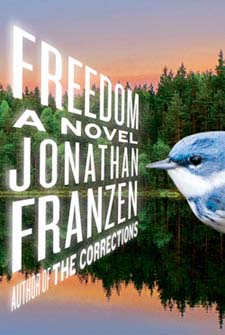 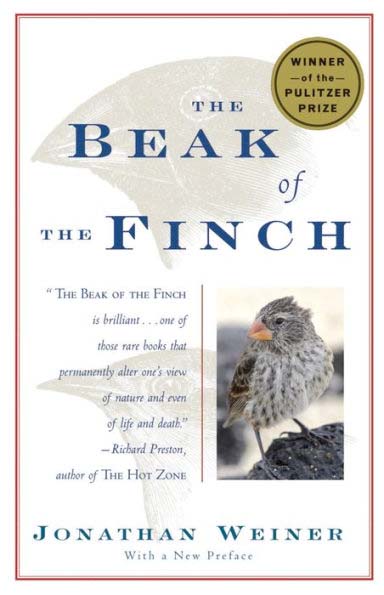 Birders have their own language, a shorthand way of speaking to each other speckled with lingo finely tuned for only their flock to understand. We use acronyms in our field notes, evidence of a quiet madness bubbling up to the surface. We have running totals of all the birds we’ve seen, our “Life List,” and try every year to one-up each other (and ourselves) with a “Big Year.” A Big Year is a challenge to identify as many birds in one calendar year as possible. I live in two universes with these lists, one for my skybound friends and another for the imaginary and true ones I encounter in the pages of some of my favorite books. Here are some books to read to achieve your own literary Big Year. Read more Birders have their own language, a shorthand way of speaking to each other speckled with lingo finely tuned for only their flock to understand. We use acronyms in our field notes, evidence of a quiet madness bubbling up to the surface. We have running totals of all the birds we’ve seen, our “Life List,” and try every year to one-up each other (and ourselves) with a “Big Year.” A Big Year is a challenge to identify as many birds in one calendar year as possible. I live in two universes with these lists, one for my skybound friends and another for the imaginary and true ones I encounter in the pages of some of my favorite books. Here are some books to read to achieve your own literary Big Year. Read more | | | |  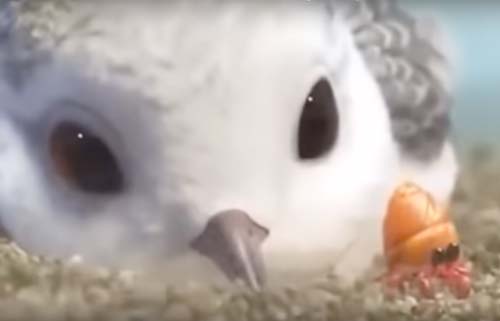 Piper short film review has been covered in detailed by Klaus Horst on All True Reviews. Read to know why he is amazed by Piper short film. Piper short film review has been covered in detailed by Klaus Horst on All True Reviews. Read to know why he is amazed by Piper short film.
I wish I could give this Piper short film review more than a 5-star rating. It absolutely deserves way more than 5 stars.
Piper has amazed kids and grownups alike. Whether you show it to a one-year-old infant or a 100-year-old person, you will see their eyes sparkling with delight on seeing this fantastic creation. Just in case you haven’t seen this incredible short film, do check it out. This short film is made by Disney Pixar Animation Studios; it speaks volumes about the perfection of Disney Pixar in their work. It was released in June 2016. The story and direction are by Alan Barillaro. 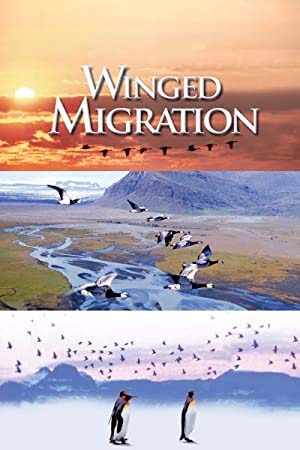 The breathtaking cinematography of migrating birds in Jacques Perrin's mystical documentary ''Winged Migration'' transports you to an exalted realm where nature operates under its own inviolable laws and humanity is portrayed as a crude, destructive interloper in the natural scheme of things. The breathtaking cinematography of migrating birds in Jacques Perrin's mystical documentary ''Winged Migration'' transports you to an exalted realm where nature operates under its own inviolable laws and humanity is portrayed as a crude, destructive interloper in the natural scheme of things.
The movie, whose few words, spoken by the director, are explanatory captions, offers a sweeping global tour from a bird's-eye view, dressed up with a new-age score by Bruno Coulais of swelling choral music and pulsing beats. (Mr. Coulais also composed the music for Mr. Perrin's insect documentary, ''Microcosmos.'') And as the images of flying birds (along with the often harsh, seemingly urgent sounds of their cries) in perfect, swooping formation accumulate, the film speaks wistfully to humankind's residual longing to soar through the heavens without mechanical help.
For much of the movie, filmed over three years using five crews of more than 450 people, including 17 pilots and 14 cinematographers, the camera flies alongside, above and below many species of birds as they make their annual round trips. In some cases that journey will carry them more than 10,000 miles between the tropics and the Arctic. All sorts of ingenious devices, from remote control gliders to ultra-light aircraft, were used to film the birds, which appear unaware of the technology recording their activities. | | | | | |  The Rachel Carson Council Depends on Tax-deductible Gifts From Concerned Individuals Like You. Please Help If You can. The Rachel Carson Council Depends on Tax-deductible Gifts From Concerned Individuals Like You. Please Help If You can. | | | |  Sign Up Here to Receive the RCC E-News and Other RCC Newsletters, Information and Alerts. Sign Up Here to Receive the RCC E-News and Other RCC Newsletters, Information and Alerts. | | | | | | | | | | | |